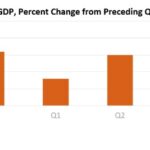By Denise Dukette, Director Loan Review Services
Regulatory guidance on HVCRE was initiated in 2013 as part of Basel III risk-weighted capital rules and applies to banking organizations which file Call Reports. HVCRE was defined in Call Report instructions for schedules RC-R, and was a method of requiring allocated higher capital for what was perceived as higher risk real estate development loans. Essentially, HVCRE reporting was intended to capture ADC loans (Acquisition, Development or Construction) for commercial real estate projects, during the development phase. The requirements, therefore, had exemptions to remove certain ADC loans: one to four family residential loans; loans for community development purposes; loans for purchase or development of agricultural land to be used for agricultural purposes; and CRE projects which met certain parameters. The CRE parameters have caused the most discussion on HVCRE, in determining whether a loan is HVCRE reportable or not. Those parameters, which excluded a loan from HVCRE reporting, were meeting all of the following requirements: being within supervisory LTV limits for the property/project type; the borrower having contributed capital of 15% of the appraised “as completed” value; the borrower’s capital being injected prior to bank funds being advanced; and the borrower’s capital remaining in the project through the “life of the project,” which was defined as prior to conversion to “permanent financing.” No loans were grandfathered for HVCRE consideration, and the Regulation’s wording resulted in many CRE loans being captured in HVCRE, which did not appear to reflect the higher risk profile.
Bankers had much consternation and confusion about determining which loans were reportable as HVCRE in the Call Report and that over-reporting had an impact on required capital levels. As a result, and in conjunction with other regulatory reforms, new legislation was passed. The Economic Growth, Regulatory Relief, and Consumer Protection Act (EGGRCPA) was passed on May 24, 2018. The legislation provided a revised statutory definition of HVCRE. However, regulatory guidance was not released, and an Interagency Statement was issued on July 6, 2018 indicating that a bank could use either the new (without guidance) or the old definition (until guidance was issued). With the passage of time this became an issue for banks, since HVCRE is a call report issue.
The revised definition of HVCRE made changes to narrow the definition. In particular, the loan had to be secured by the subject real estate; loan proceeds must be primarily for the development project (intended to exclude loans which had multiple uses of funds such as equipment for a facility); the 15% capital contribution allowed use of concurrent appraised value of real estate contributions rather than acquisition value which could be much older and difficult to determine; and the conversion to “permanent financing” was refined to include loans which had the capacity to support amortizing debt (such as a partially occupied building, pre-leased space, owner occupied real estate with operational cash flow, and debt on an interest only basis but with cash flow sufficient to support amortization). The HVCRE-ADC definition was also refined to only address loans originated from January 1, 2015 and after, and to correlate community development loans to SBA lending parameters.
Regulatory guidance was issued in November, 19 2019, issuing a Final Rule which goes into effect April 1, 2020. A couple of interesting aspects to the Guidance are as follows. A bank may use either definition of HVCRE until the Final Rule goes into effect. A loan which is modified or the project altered may cause an existing loan to become HVCRE-ADC reportable; this could occur if the borrower reduces capital investment below the 15% threshold. Loans secured by non-farm, non-residential properties, as defined in Call Report instructions, generally do not meet the criteria for HVCRE exposure since such loans are not dependent upon future income or sales proceeds; this includes condominium and cooperative properties with 5 or more units as long as repayment is from sale of individual housing units. Loans to purchase vacant land, other than agricultural, may be considered HVCRE exposure if repayment is from income from or sale of the land, or refinance into another lending facility. Community Development loans are excluded from HVCRE reporting. SBA supported loans which meet community development parameters are also excluded but are not exempted otherwise unless meeting other criteria, which allows for exclusion from reporting. Capital contribution can include funds borrowed using real estate unrelated to the ADC project being financed directly, subject to reasonable underwriting.
It should be noted that the Call Report Instructions contain detailed definitions of HVCRE, along with the EGRRCPA legislation and the Regulatory Guidance going into full effect in April, 2020. The FAQs issued in conjunction with the prior legislation are rescinded as of April 1, 2020. As further commentary is provided by the regulatory agencies, there is likely to be further refinement.






